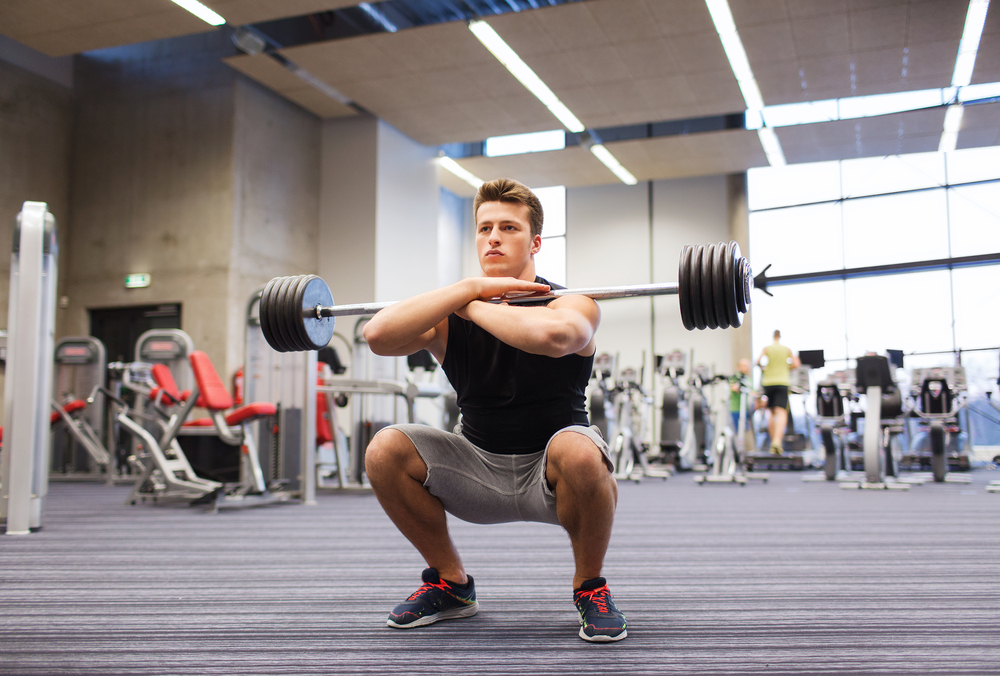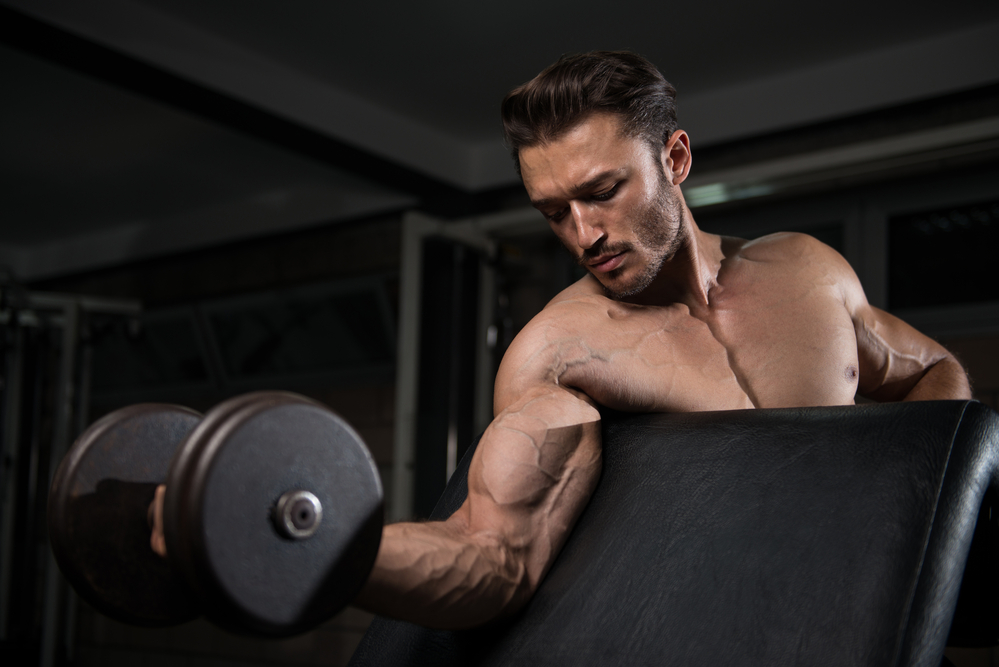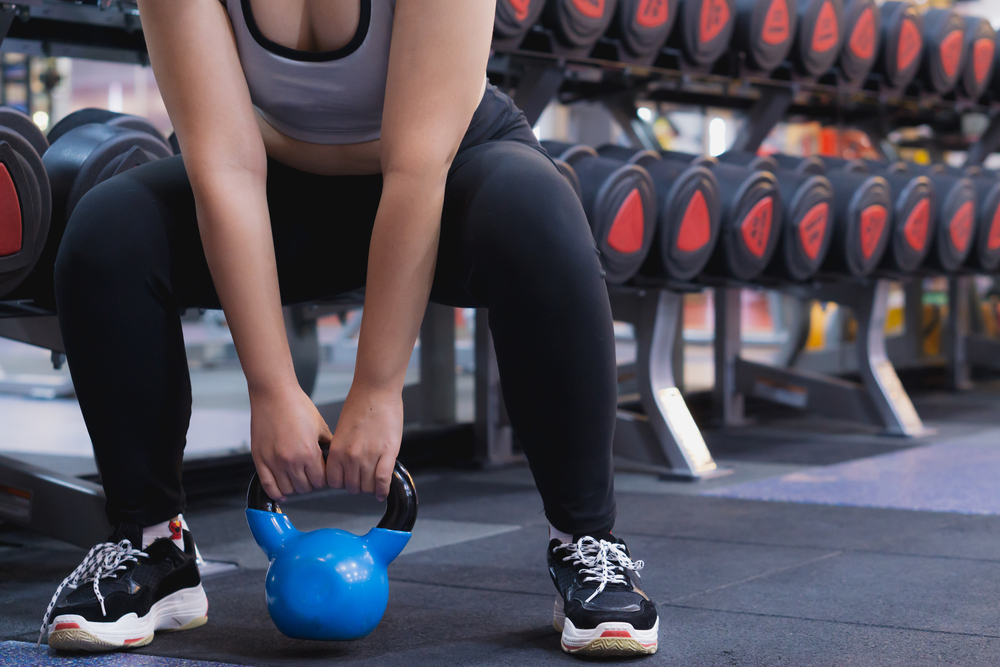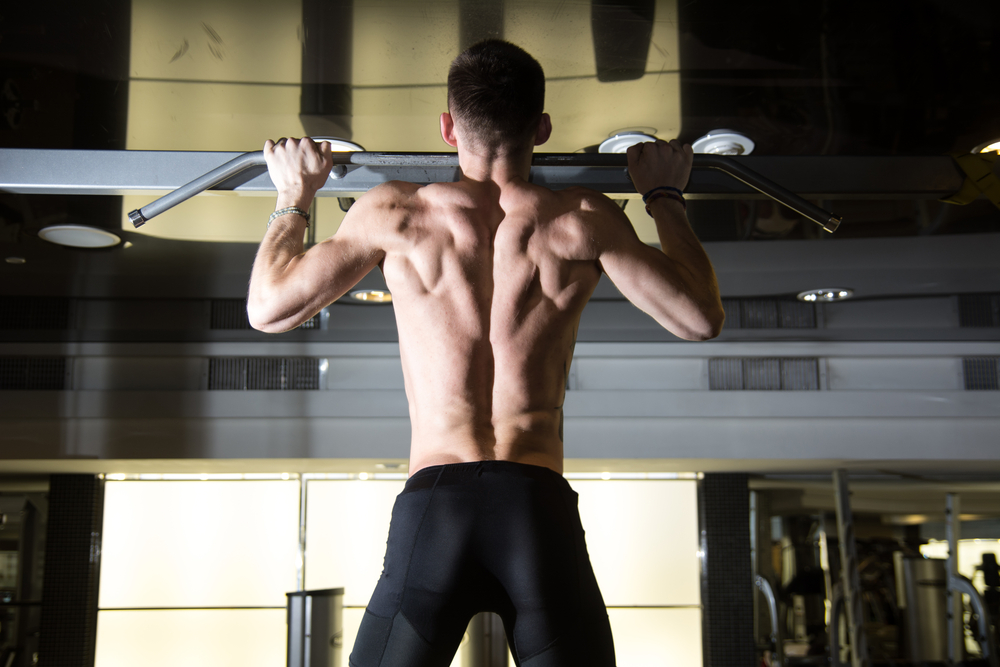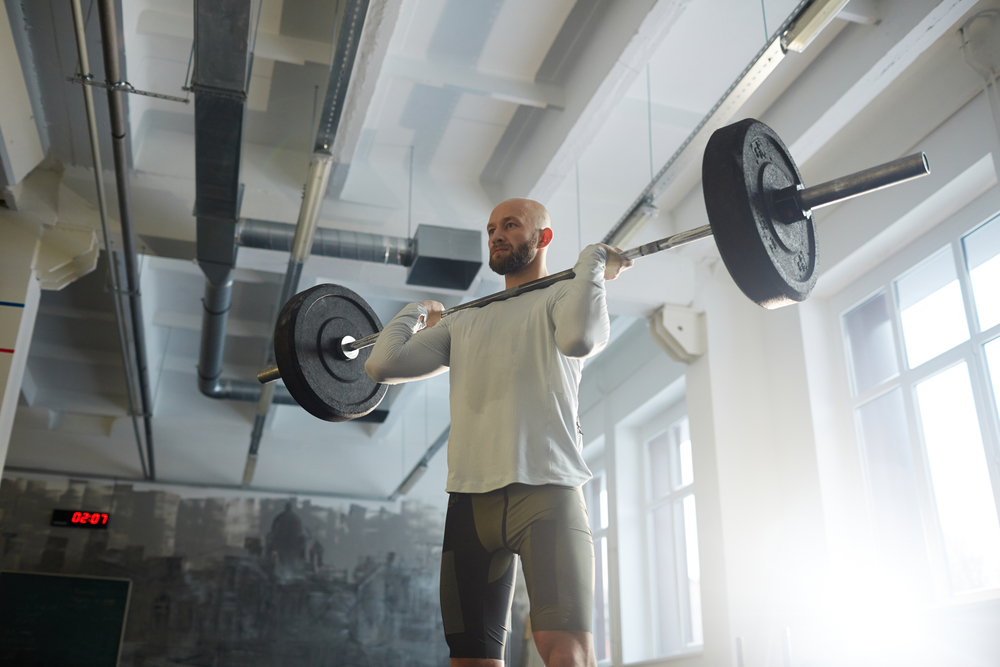
Table of Contents
The standing chest press is a powerful, energy-intensive exercise that came to bodybuilding from weightlifting. Its inclusion in the training program contributes to the growth of an athlete’s strength indicators, an active increase in the mass and volume of several muscle groups at once.
The benefits of exercise
Correct execution of the exercise allows you to load several muscle groups to the maximum in a short time, to develop explosive strength
The musculature receives tangible stress, provoking its active growth
There is progress in doing other strength exercises
Speed and coordination of movements develop. Flexibility in the shoulder joints is increased
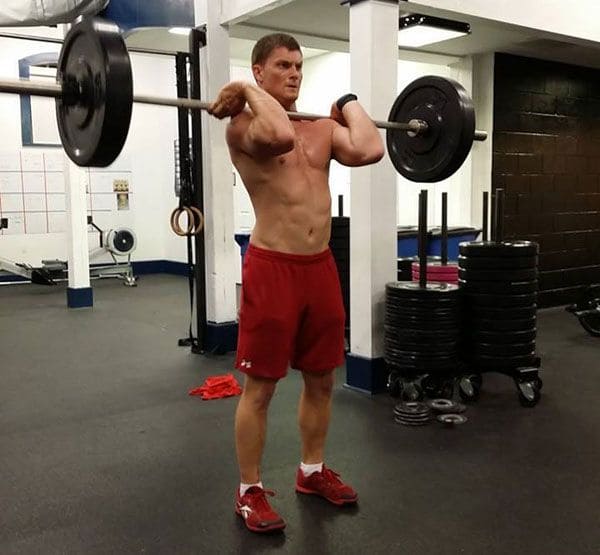
In other words, if the classic barbell squats, deadlifts, or presses are no longer enough for you, to get the maximum muscle response, try this heavy exercise. However, remember that the standing barbell chest press is quite traumatic and therefore requires a refined execution technique. It’s better to start mastering the movement with an empty bar or low weight.
Exercise is contraindicated for people experiencing problems with the spine, shoulder or knee joints, and wrist injuries.
Working muscles
The standing chest press is a basic exercise. It engages the muscles of almost the entire body. The main load is on the hips and lower back. Additionally, the press, traps, shoulders, forearms, calves, and buttocks are involved in the movement.
“A feature of this movement is the need to quickly and accurately coordinate the work of a large number of muscle groups.”
Exercise technique
The standing barbell press can be performed:
From the platform (from the floor)
From a few centimeters from the platform
From below the knees
From the middle of the thigh
The main thing is to lift the bar from the floor, and other positions are considered auxiliary. In particular, the snatch is intended for training the first phase of the movement. The positions below and above the knees are used for practicing acceleration.
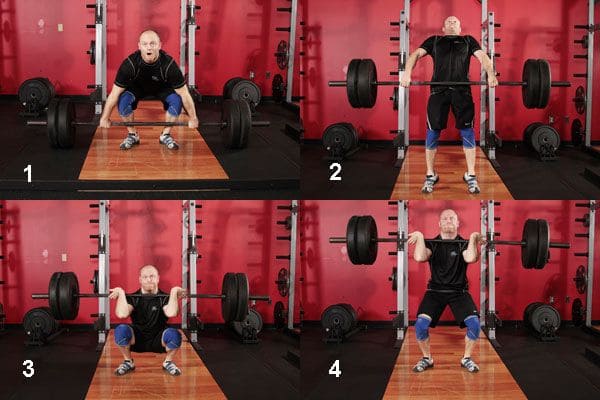
Snatch of the barbell to the chest
Let’s look at the classic version when the bar is on the floor:
In the end, you can return the barbell to its place, or, lowering the barbell to mid-thigh level, go straight to repetition. To do this, you need to quickly bring your elbows out from under the bar and squat down slightly, unbending your arms and lowering the bar. Calculate your working weight so that you can complete 8 clean reps.

Lifting the barbell from mid-thigh level
Useful tips
The exercise has several features that you should always keep in mind:
The bar moves strictly along the body, not along a vertical path
There should be no stops between the phases of movement. The exercise is performed holistically, with a smooth transition between phases
The barbell moves due to the coordinated work of a large number of muscle groups. If any of them, for example, your hips, back, or shoulders, are lagging, work on their development separately
This exercise will allow you to develop muscle strength and get a significant increase in muscle mass. Movements can be practiced separately. Then you may collect them into one exercise. It’s better to start training with a lightweight, and after the exercise becomes completely controlled, increase the load.



